Does Idaho really have a state dinosaur? Here are 15 of Idaho’s most fun, wackiest emblems
Lifelong Idahoans passionate about their state are likely well aware of the state’s official gem or flower. But did you know Idaho also has a state dinosaur, dance and even raptor?
The Idaho Statesman, in conjunction with the Idaho Legislative Research Library, looked at old legislative documents and Statesman archives from the Boise Public Library to piece together when and how Idaho’s state emblems came to be.

State Bird: Mountain Bluebird
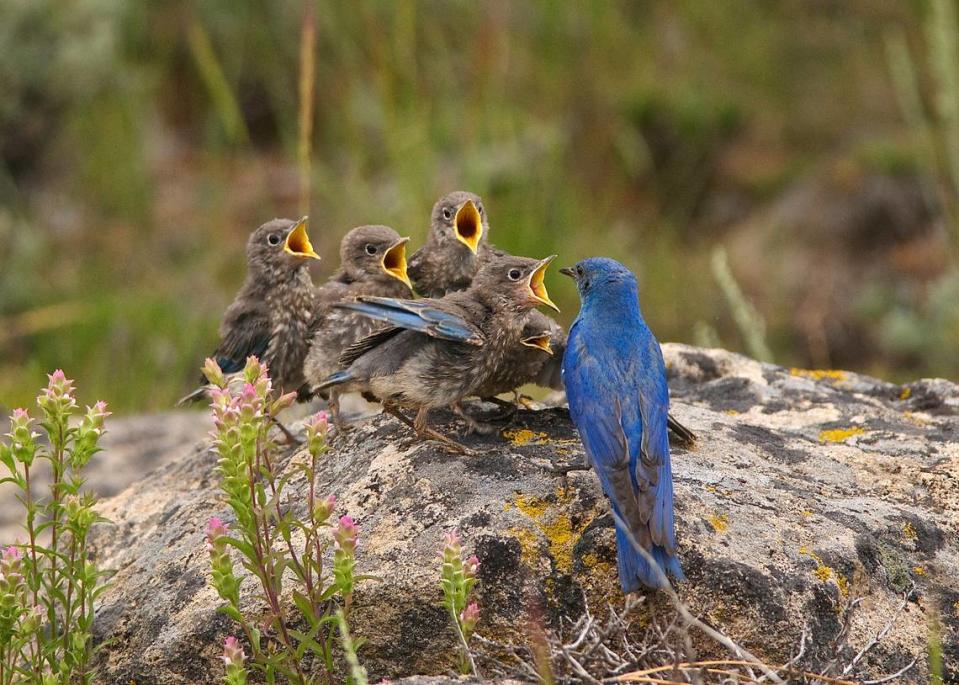
One of Idaho’s oldest emblems, the mountain bluebird became the state bird in 1931. According to an article in the Statesman from February of that year, few residents in the state’s southern half were even aware that the mountain bluebird existed.
According to the article, the bluebird would hide away in Idaho’s high plateaus around the Snake River, where it would remain through the mating season. For those lucky enough to see the bird, its arrival from warmer climates typically indicated the start of summer and was a sign of good luck and happiness, which led to the legislation adopting it as the state bird.
Nearly 100 years later, the birds observe the same pattern and can be seen throughout the state after mating season, according to Idaho Fish and Game.
State Flower: Syringa
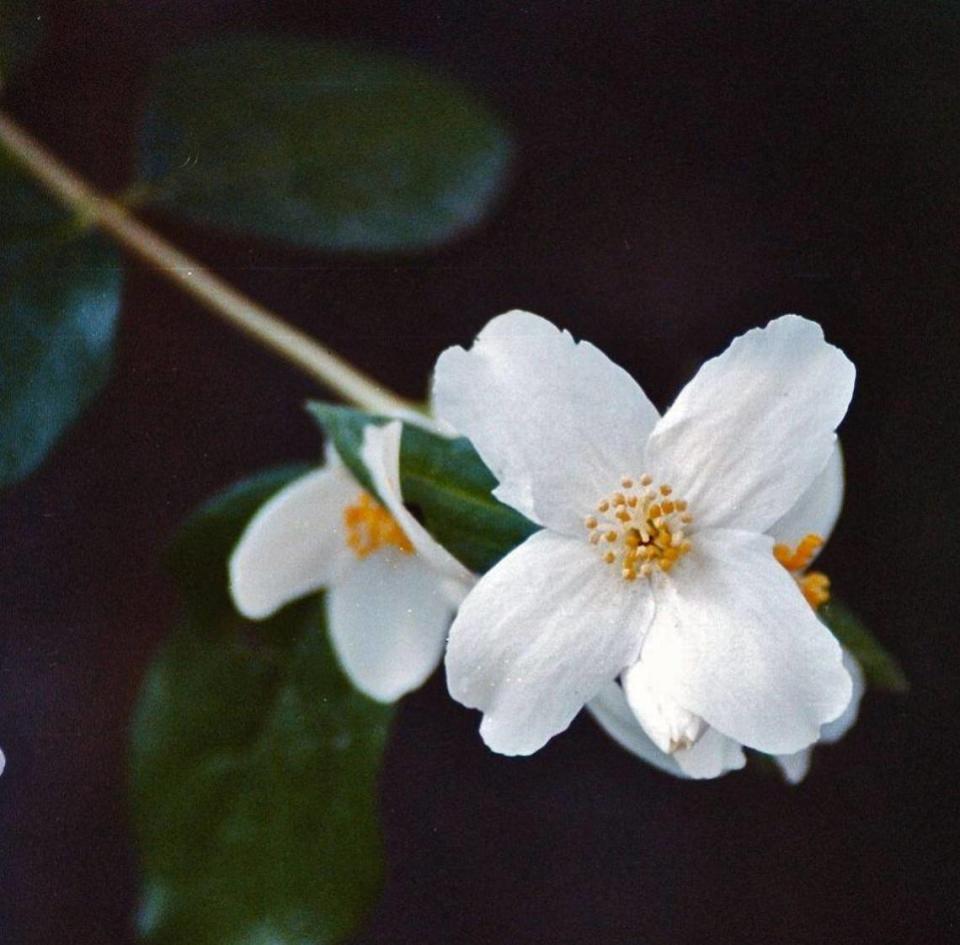
The syringa also joined the annals of Idaho’s emblem history in 1931 after a vote by schoolchildren. According to an article in the Statesman, children across the state voted on Arbor Day for Idaho’s state flower, resulting in the syringa winning.
The publication The Nampa Progress was quoted in the Statesman article, describing the syringa as “a perennial native of Idaho, blossoms of pure snow white resembling orange blossoms and very fragrant. We do not know that it is a native of any other state.”
The syringa’s scientific name, Philadelphus lewisii, pays homage to Meriwether Lewis, who collected the flower on Lewis and William Clark’s expedition across the Pacific Northwest. It can be found in Idaho near Idaho City and Anderson Ranch Reservoir in the Boise National Forest, according to the U.S. Forest Service.
State Song: ‘Here We Have Idaho’

Can you imagine the entire Idaho House of Representatives all singing in unison?
No?
Well, that’s what happened in 1931. The song, composed by Sallie Hume Douglas according to Idaho Code, was selected as the state song in February 1931.
House Chairwoman Emma Yearin introduced University of Idaho graduate and soprano Lois Russell to the clerk’s rostrum, according to an article in the Statesman, where she sang the song’s chorus as the clock struck 2 p.m.
At Yearin’s request, all House members stood and sang the chorus. You can find the song with lyrics on YouTube.
State Tree: Western White Pine
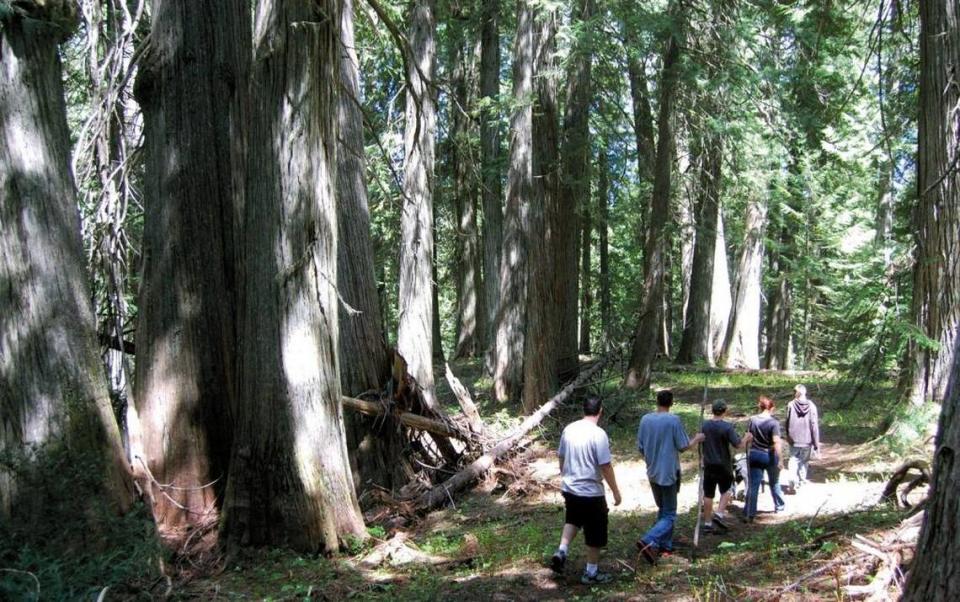
The Western white pine isn’t as populous in Idaho as it was when designated as the state tree in 1935, but its existence in the northern reaches of the Rocky Mountains means North Idaho is one of the few places the tree can be found.
The Idaho House passed a bill to make the Western white pine the state tree by a vote of 56-1, with the only no coming from a Valley County representative, according to a February 1935 article in the Statesman. The representative thought the yellow pine tree would be a better selection, but other House members argued that the yellow pine appeared more frequently in other states and therefore had no significance to Idaho.
The largest white pine in the world stands in Idaho, according to the Secretary of State’s Office. The massive tree is near Elk River in North Idaho and stands 219 feet.
State Gem: Star Garnet
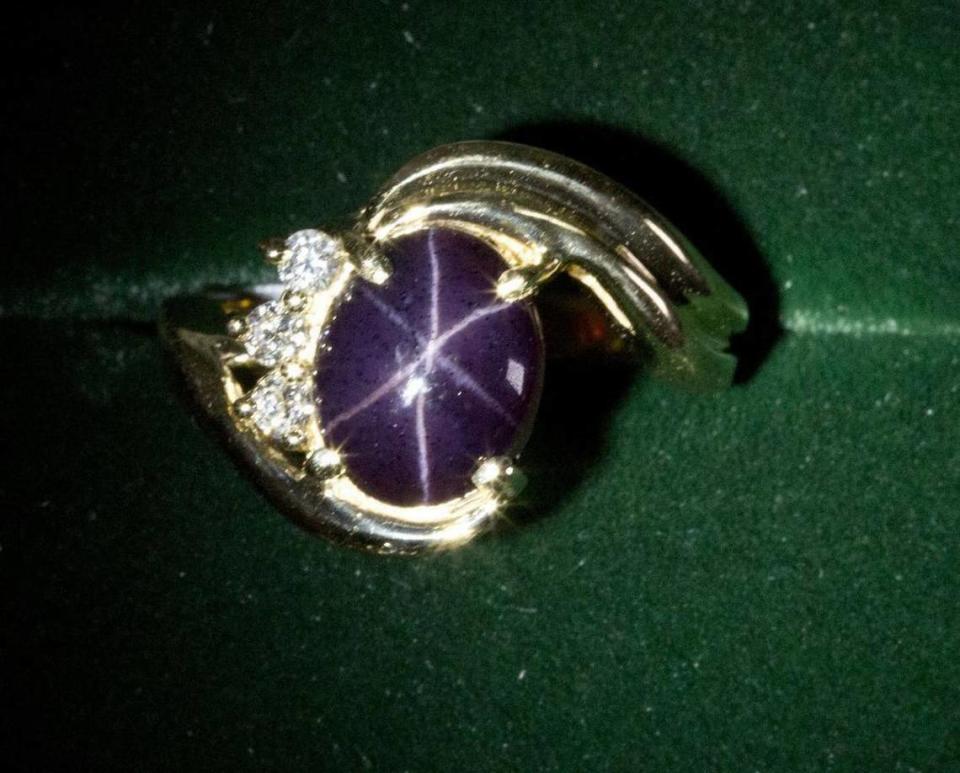
It only makes sense for the Gem State to have a state gem, and in 1967 the Legislature unanimously voted on the star garnet.
According to a 1967 Statesman article, the Senate State Affairs Committee said that Idaho star garnets “have a reputation for being the world’s finest and most beautiful, and the star garnet is the rarest of the popular star stones.”
The only place the star garnet can be found in abundance is in Latah County in North Idaho, specifically around the Emerald Creek Garnet Area near St. Maries.
State Horse: Appaloosa
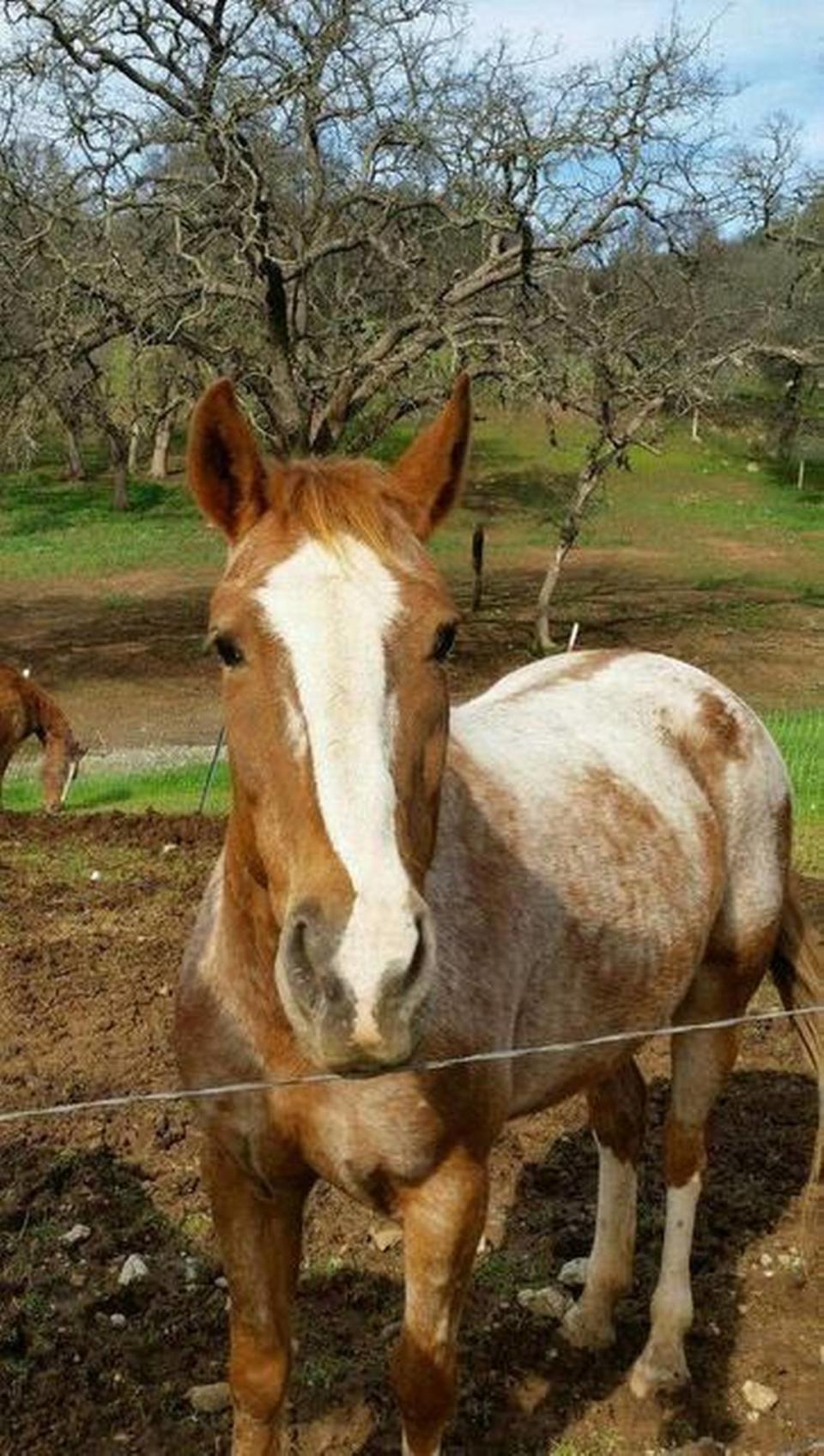
In March 1975, Appaloosa horses were paraded in front of the Statehouse in downtown Boise to celebrate the native Idaho animal being named the state horse. The Appaloosa beat out competition from the quarter horse, which was initially in the running, according to a 1975 Statesman article, before it was pointed out the quarter horse was developed in Texas.
In contrast, the Appaloosa was developed in Idaho by the Nez Perce Tribe and became an integral part of the tribe’s history during the Nez Perce War of 1877. The horses — developed for intelligence, speed and endurance — were used by tribal members to avoid the U.S. cavalry for several months.
The Appaloosa is now one of the most common horse breeds in the United States, according to the Appaloosa Museum in Moscow.
State Fossil: Hagerman Horse
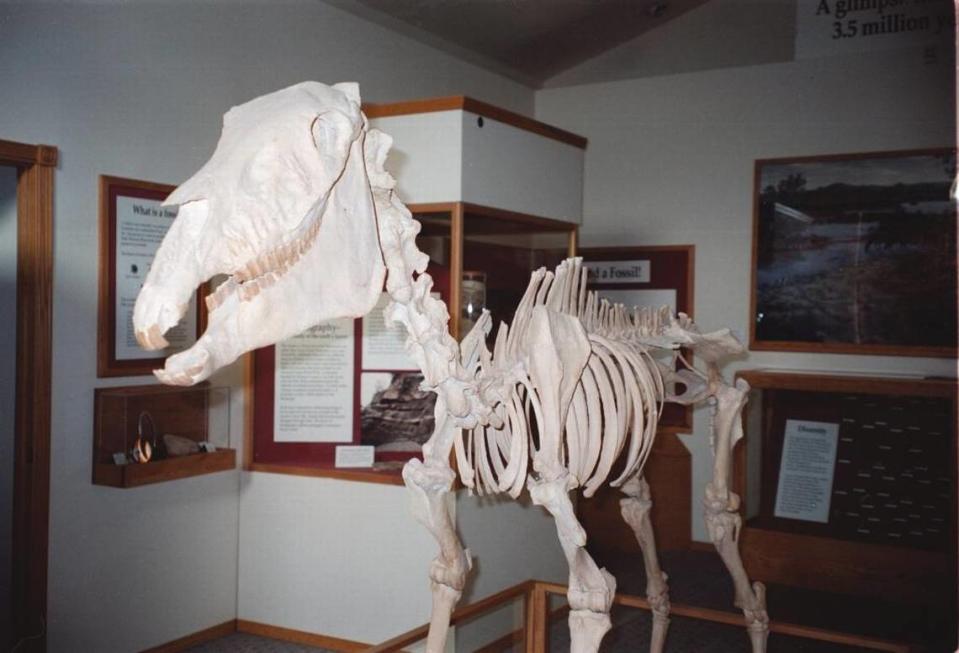
While one state emblem is a live horse, another is an extinct horse.
The Hagerman Horse was 5 feet tall and believed to be a herd species related more closely to zebras than horses. Over 200 fossils have been found in Southern Idaho around the Hagerman Fossil Beds National Monument, signifying the most extensive collection of Hagerman Horse fossils ever found.
The House Commerce, Industry and Tourism Committee proposed the Hagerman Horse as the state fossil in 1988, citing that it is the most common mammal fossil in Idaho.
In the spring 1967 version of the Journal of the Idaho Historical Society, the mammal was called the “Hagerman Zebra” in an article highlighting the Hagerman fossil beds. A January 1988 Statesman article quoted Hagerman Mayor Merle Owlsey calling the 3.4 million-year-old horse “Idaho’s oldest citizen.”
Idaho residents can find a fully reconstructed fossil of the Hagerman Horse, along with fossils of other animals like the ground sloth and saber-toothed cat, at the Hagerman Fossil Beds National Monument just off Interstate 84 in south-central Idaho.
State Amphibian: Idaho Giant Salamander
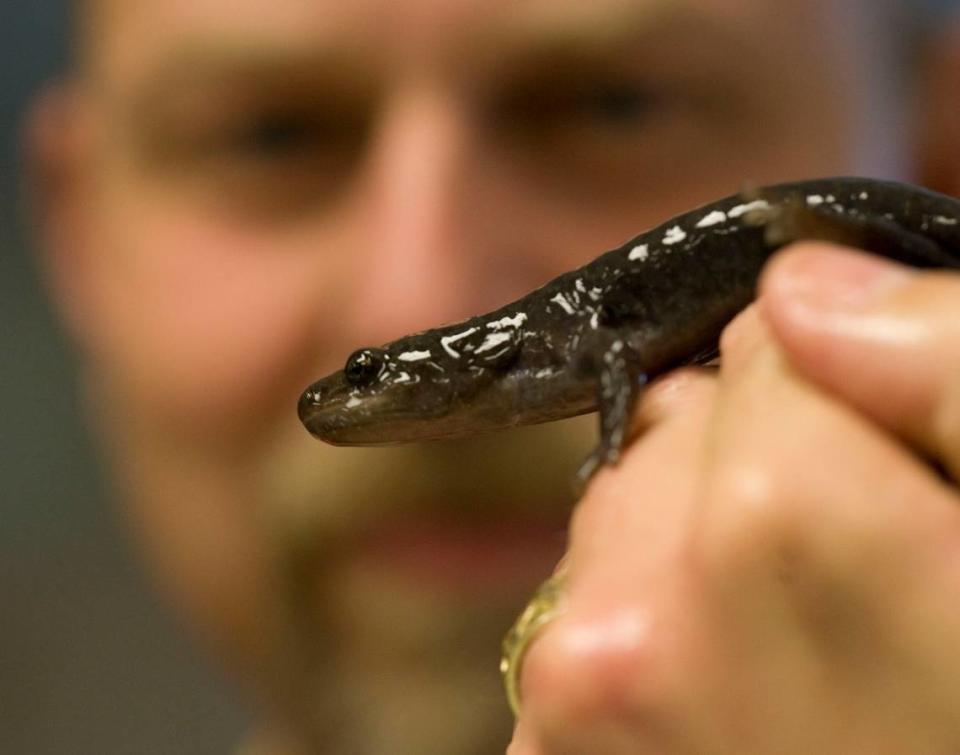
A recent addition to Idaho’s state emblems, the Idaho Giant Salamander was proposed in 2015 by Les Bois Junior High student Ilah Hickman, who stated that the salamander lived almost exclusively in Idaho and was a perfect contender for the state amphibian.
Children around the state wrote to former House State Affairs Committee Chairman Tom Loertscher asking for the Idaho Giant Salamander to become the state amphibian. The Legislative Research Library still keeps those letters in its records.
Hickman’s bill was killed earlier in the 2015 legislative session before being brought back to life and quickly passed by the House and the Senate in the final hours of that session.
The Idaho Giant Salamander can be found throughout the north-central parts of the state, according to Idaho Fish and Game, with a tiny sliver of the population also living in Montana.
State Dinosaur: Oryctodromeus
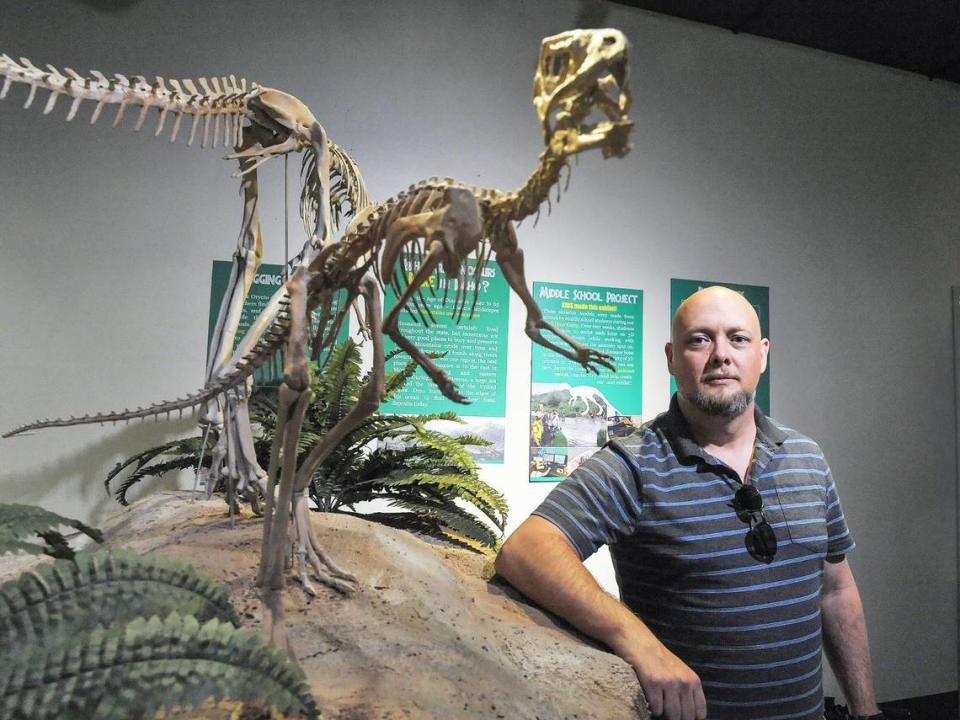
A state fossil wasn’t enough for Idaho. In 2023 the Legislature also voted on a state dinosaur, eventually landing on the Oryctodromeus, a dinosaur discovered in Bonneville County in 2006.
State Senator Kevin Cook proposed the idea on Feb. 27 in the Senate State Affairs Committee, saying that fourth graders around the state had been lobbying for the Oryctodromeus to become the state dinosaur.
According to committee minutes, Cook argued that the fourth graders had gone to great lengths to research and write a proposal for the state dinosaur and that their opinion should be valued.
The Oryctodromeus was a small herbivorous dinosaur that lived in the Late Cretaceous Period about 94-99 million years ago, according to the Natural History Museum in the United Kingdom.
State Dance: Square Dance

In 1989 Idaho joined a growing list of states that adopted the square dance as its state dance.
According to minutes from the House State Affairs Committee, Ted Koskella approached the Legislature with hopes for the square dance to one day be adopted federally as the national folk dance of the U.S. Koskella told representatives that the square dance was essential to the economics of Idaho because of the clothing purchased and out-of-state visitors who came to Idaho for square dance festivals.
As of 2023, 31 states have adopted the square dance as their state dance.
State Fish: Cutthroat Trout
The Idaho Senate endorsed legislation to make the cutthroat trout the state fish in 1990 — it happened just two years after an attempt to make the sturgeon the state fish failed, according to a Statesman article in March 1990.
The idea of the cutthroat as the state fish was first presented by Jim Kolet, a fourth-grade teacher, and his students at Indian Creek Elementary School in Kuna. According to committee minutes, the students put on a play for the Senate Resources and Environment Committee, which resulted in rousing applause.
About two weeks later, an Idaho Fish and Game fishery biologist presented a bill to designate the cutthroat trout as the official state fish — it passed in the House by a 26-14 vote.
Cutthroat trout can grow to about two feet long and are found throughout most of Idaho year-round.
State Insect: Monarch Butterfly
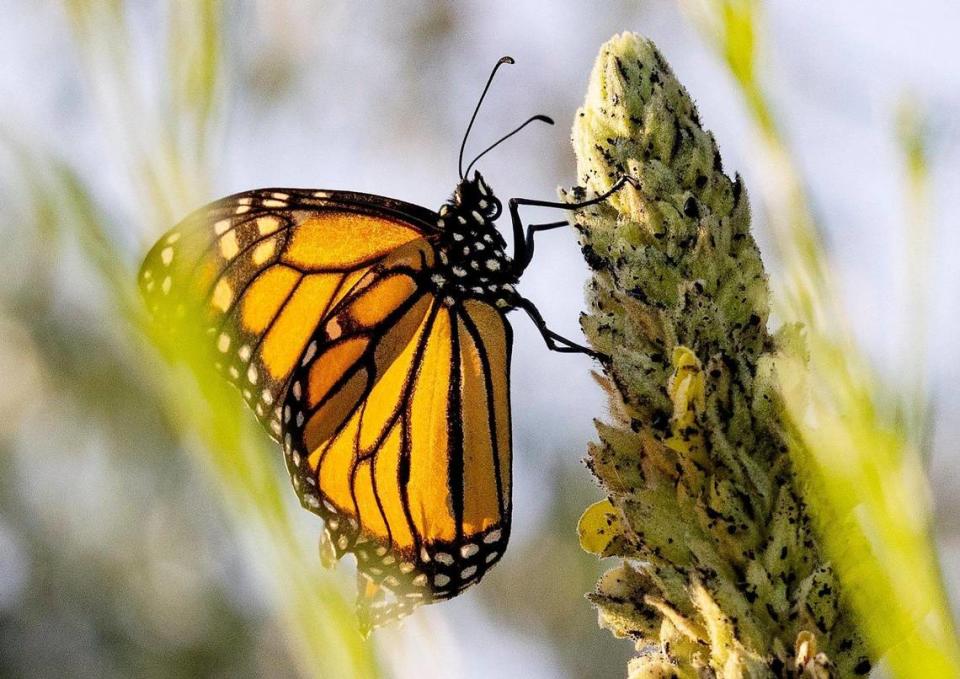
Despite the monarch butterfly’s semi-annual journey from Canada to the southern U.S. and Mexico through dozens of states, Idaho adopted the butterfly as the state insect in 1992.
Rep. Molly Lazechko introduced the idea to the House State Affairs Committee in February 1992, and on Valentine’s Day invited a group of fourth-grade students from Cole Elementary School to present a song and testimony on behalf of the butterfly. The monarch butterfly breeds in Idaho and then-Sen. Brian Donesley noted that the butterflies were also good for farms because they eat weeds.
According to a Statesman article a week later, all it took was the group of students flapping around in orange and black paper wings for the Idaho Senate to approve the bill unanimously by a 41-0 vote. But it wasn’t all straightforward; Sen. Betty Benton, tongue-in-cheek, suggested the common earwig, while Sen. Stan Hawkins joked that the selection of the monarch butterfly was “discriminatory.”
Monarch butterflies can be found in Idaho most commonly during the summer months.
State Fruit: Huckleberry
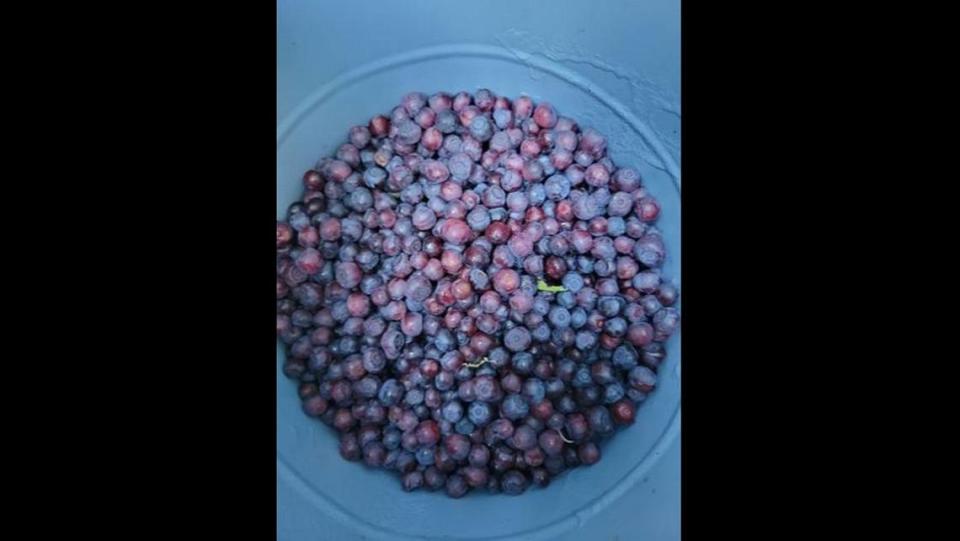
Another fourth-grade class led the charge to make the huckleberry Idaho’s state fruit. Students from Southside Elementary in Bonner County wrote to the Legislature in 2000, but the idea did garner some pushback.
Opponents claimed that the huckleberry grew in too few of the state’s counties and that taking time to debate the bill was too trivial, according to a Statesman article from March 2000. Rep. Maxine Bell from Jerome argued that critics were missing the point and that any chance to engage children in the legislative process was positive. The House forwarded the proposal to the Senate with a 48-19 vote, and it passed there, too.
The best time to pick huckleberries is mid-July through August in many of Idaho’s coniferous forests, according to the U.S. Forest Service. The Priest Lake area in the Idaho Panhandle is a prime spot for picking huckleberries.
State Vegetable: Potato
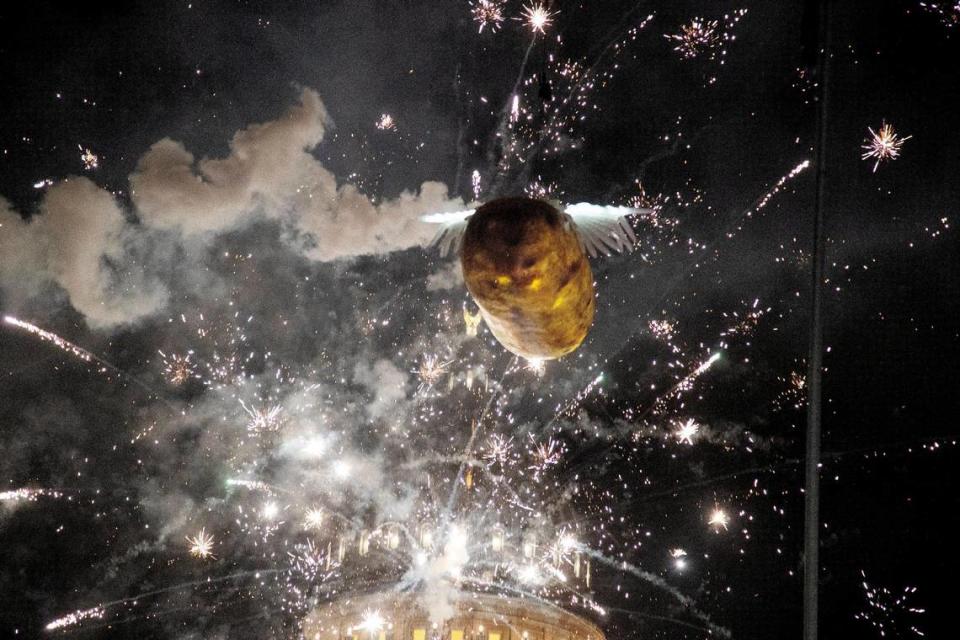
This one isn’t a surprise. When people hear the word Idaho, the first thing they probably think of is potatoes — the state produces nearly a third of all U.S. potatoes.
But it took until 2002 for the potato to become recognized as the state vegetable. There was some debate over why the state vegetable couldn’t more specifically be an Idaho russet burbank potato.
“We raise a variety of potatoes in Idaho,” Sen. Bart Davis was quoted saying in a March 2002 article in the Statesman. “We are choosing to honor today the potato collectively.”
State Raptor: Peregrine Falcon
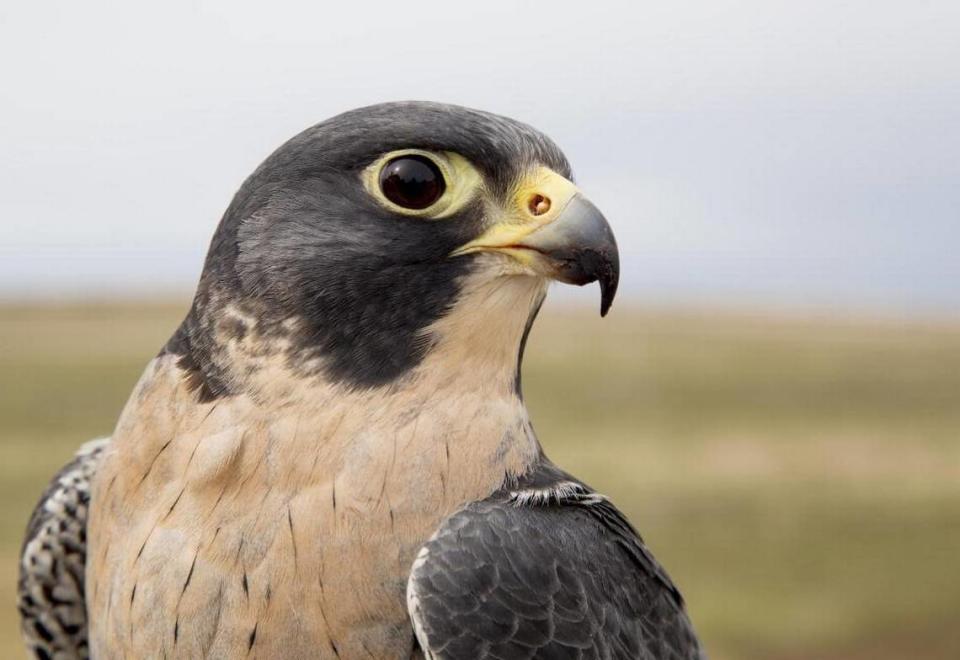
The peregrine falcon is an Idaho success story, having come back from the brink of extinction thanks to the help of The Peregrine Fund just south of Boise.
Rep. Skippen Snodgrass brought the idea of a state raptor to the Legislature in February 2004, citing that students from two schools in his district had researched and proposed the idea to him. Tom Cade, co-founder of The Peregrine Fund, spoke in support of the bill in front of the House State Affairs Committee.
The peregrine falcon can be seen today at the World Center for Birds of Prey south of Boise and in the wild throughout the Morley Nelson Snake River Birds of Prey National Conservation Area.

